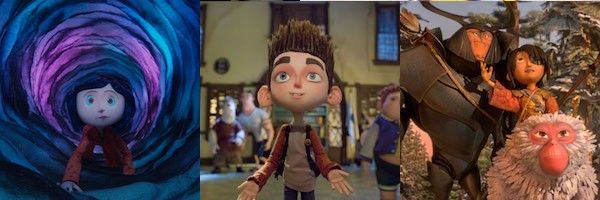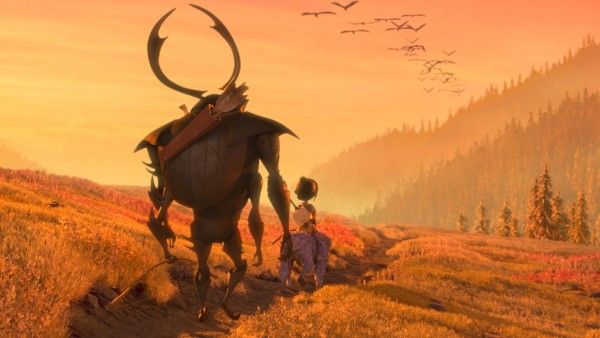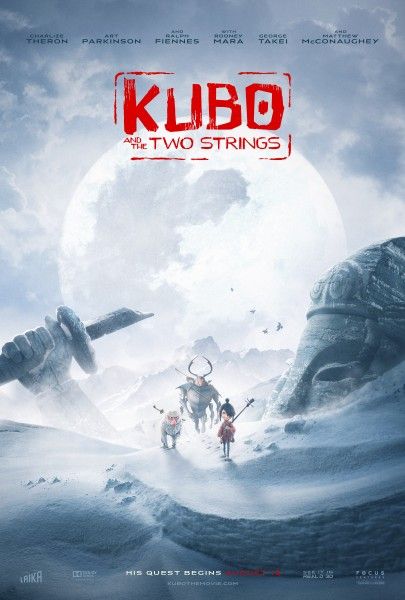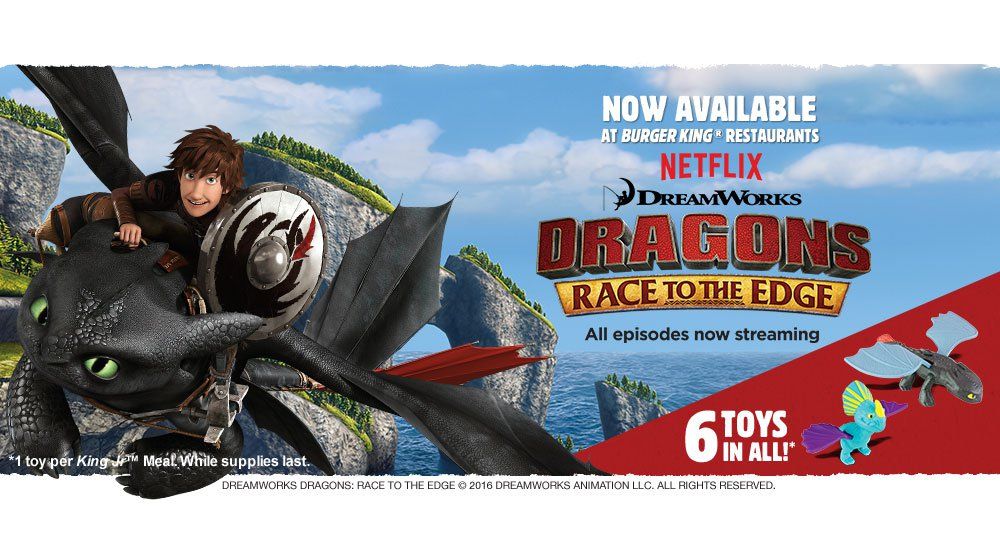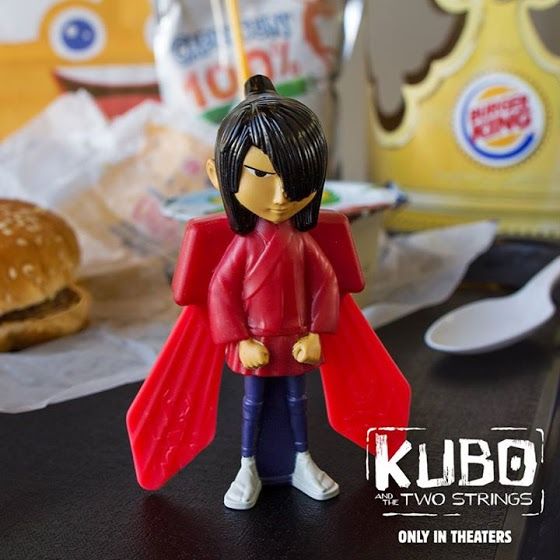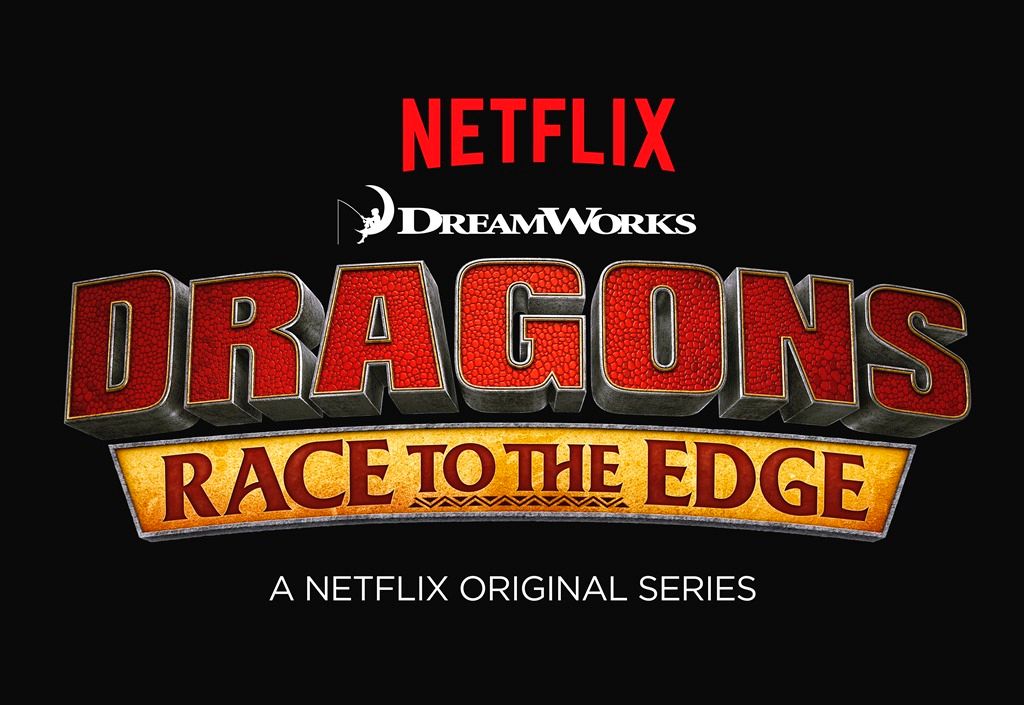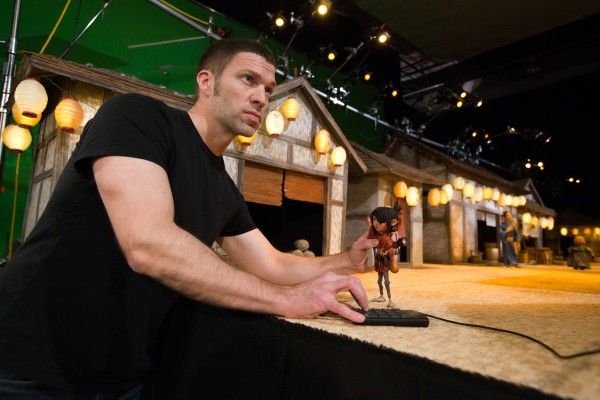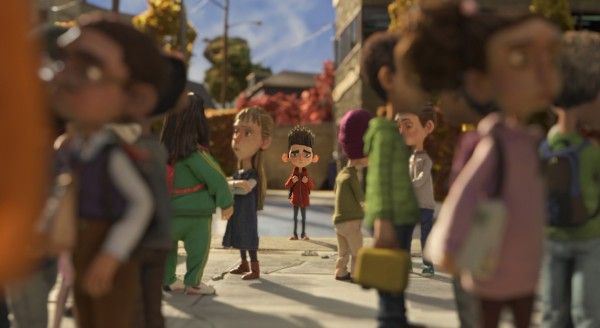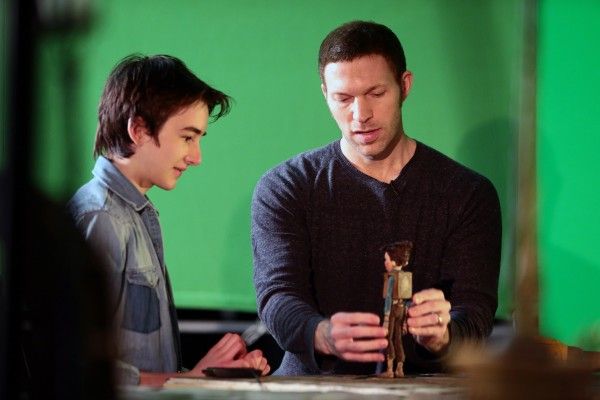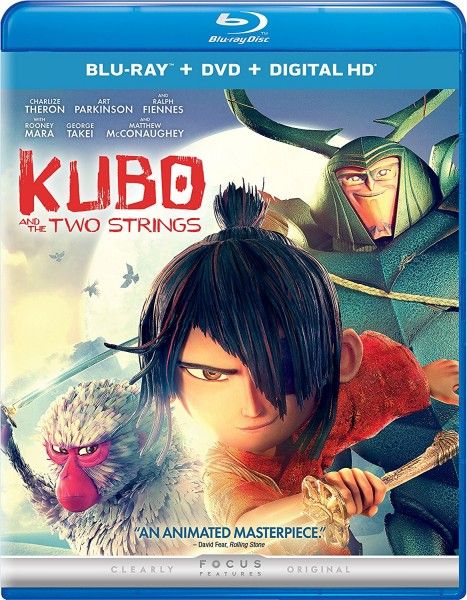Let's get one thing out of the way right now: I'm a huge fan of LAIKA Studios, an outspoken proponent for their highly original and entertaining films, and continue to be impressed with their technical achievements and hands-on craftsmanship year after year. (I'm also not an animator, a LAIKA insider, nor a businessman, so take my upcoming suggestions with that in mind.) There is much to praise the studio for in terms of artistic integrity, painstaking attention to detail, and their fearless approach to filmmaking. But thanks to declining box office performances and a refusal (or inability) to license their properties to merchandising, sequels, and spin-offs, I worry that LAIKA's indie outlook may be an unsustainable one.
Before any alarm bells start going off, LAIKA probably isn't in any financial trouble at the moment; they have deep pockets. They have no plans to close up shop any time soon. But while the studio's indie approach to filmmaking is what makes it so charming and unique, it's also what hamstrings their potential. With only four feature films from the studio over the last seven years, it's clear that LAIKA opts to focus their time, money, and effort (not to mention blood, sweat, and tears) on projects they deem worthy. But in order to keep the studio's stable of highly talented and specialized craftspeople employed and to keep the films coming for decades rather than simply years, LAIKA should strongly consider a licensing strategy to fill their coffers.
This isn't just a plea for a cash grab; I'd hate to see LAIKA toilet seats as much as the next fan. But it's a cold hard fact that a strong financial foundation allows more creative freedom. A licensing strategy could bring more than just toys, games, and tchotchkes to the masses, it could bring new, original, and continuing stories from the creative and singular minds of LAIKA. So while I wouldn't be surprised to find that CEO Travis Knight prioritizes artistic expression over financial success, I would be heartbroken to see LAIKA fold over a refusal to license out their richly imaginative original properties. Let's take a look at the state of things as we know it and then discuss ways to potentially bring more LAIKA to more people.
Box Office
Clearly, LAIKA doesn't have the licensing ability, merchandising machine, or massive resources of animation houses like Walt Disney Animation, Pixar, DreamWorks Animation, or Sony Pictures Animation. The fact that they're solely a stop-motion animation studio also does not do them any favors. The good news is that LAIKA's decision to focus on one film at a time allows them to direct their attention, technical expertise, and marketing budget solely on that project; the bad news is that all their eggs are in that basket. If an animated film from any of the other studios flops, they can distribute that loss amongst their other releases and use merchandising and licensing revenue to defray the cost. LAIKA is all-in on every project, and that has yet to pay off in a big box office return.
With an estimated average production budget of $60 million for each LAIKA film, Box Office Mojo shows the downward trend of domestic and global box office returns over the years (in millions):
- Coraline (2009) - $75.3 / $124.6
- ParaNorman (2012) - $56 / $107.1
- The Boxtrolls (2014) - $50.8 / $109.3
- Kubo and the Two Strings (2016) - $47.9 / $69.3
That last report is particularly distressing. LAIKA's estimated production budget may be around $60 million, but their marketing budget has presumably increased over the seven-year span of these films. Kubo featured the heaviest rate of appearances yet online, on TV, and in theaters leading up to the film's August release, but the box office return dropped off precipitously. Perhaps the late summer release dates aren't a good time for these family-friendly but also unfamiliar films; Coraline, an adaptation of the Neil Gaiman book by the same name, debuted in February while the other three opened in August or September.
What worries me about LAIKA's approach to once-in-a-while filmmaking and the downward trend at the box office is that moviegoing audiences are either not familiar with the studio, are not connecting the studio's previous prestigious works with their new releases, or are just not interested in new and original stories despite the common complaint that everything in theaters is a sequel or a spin-off. There's a reason that sequels, spin-offs, and nostalgia plays often make bank at the box office: there's a built-in familiarity that reassures moviegoers and families that their hard-earned dollars will be going to something safe, moderately entertaining, and easily understood by young and old. LAIKA bucks that trend by offering visually striking films that are, by their nature, different from anything we've seen before, with stories that tug at your heart and beg you to expand your mind.
That's how you win the artistic awards but not how you gain awareness in the contemporary cultural conversation. To do that, LAIKA needs to embrace licensing and increase their presence in an already saturated media landscape.
Merchandise
Admittedly, "licensing" sounds like a dirty word in indie, arthouse circles. It's synonymous with "selling out" or otherwise sacrificing your artistic vision for monetary gain. But I happen to think that's a shortsighted perspective and an outdated one to boot. To succeed in today's economy, it helps to have wealthy investors, but it helps everyone to have multiple streams of revenue that aren't tied solely to your big projects that release once every couple of years. The videogame industry learned this lesson by implementing in-game currency, micro-transactions, and expansions or downloadable content in the lulls between major releases.
Licensing doesn't have to be a dirty word. Plenty of us who are old enough to make significant purchasing decisions today look back fondly on our childhoods in part because of the media we consumed, but more tangibly because of the merchandise we played with, the plates and cups we ate and drank from, the lunchboxes, backpacks, and clothes we took to school, and infinitely more trinkets that found their way from the screen into our lives. Disney has figured this out better than most, implementing a strategy that allows the massive company to generate incredibly lucrative licensing deals and then use those proceeds to buy up other properties that generate even more licensing deals in perpetuity.
LAIKA could learn a lot from the Disney model. That's not to say the independent studio has any chance of competing with Disney in this arena; the Mouse House is massive, with $52.5 billion in global retail sales in 2015. Warner Bros., Hasbro, Nickelodeon, and NBCUniversal each have about a tenth of that, with DreamWorks Animation coming in around $3.3 billion for the same time period. So while Disney's marketing machine is the gold standard, DWA is perhaps a more apt comparison. The studio's 2015 release Home somehow quietly made $386 million at the global box office, while Kung Fu Panda 3 made the impressive though not surprising $520 million worldwide. However, DWA "has been reducing its dependence on the volatile feature films business to concentrate on increasing revenue from licensing its original content to media houses and video streaming companies." LAIKA can take notes here. DWA is a success story that started with goofy, farting animal movies that now has some strong feature franchises bolstered by a bold licensing strategy. Even Sony Pictures Animation is continuing to focus on its licensing deals in advance of their 2017 release, Smurfs: The Lost Village. The quality of LAIKA's films are at least on par if not superior to these animation houses, it's just the merchandising might they lack.
Here's a fun experiment you can do at home: Google "Disney toys" or "Disney merchandise", and take a look at the number of results, something in the tens of millions. Now swap in any other animation studio or franchise and do the same. You'll quickly notice magnitudes of difference. Now do the same for an Amazon search, and you'll see a similar wealth of Disney toys, a tenth of that number available for the smaller animation studios, and a dearth for LAIKA products. While that's a shame for kids who want to play with ParaNorman, Boxtrolls, and/or Kubo toys, and collectors who want to display them, it's an even bigger missed opportunity for LAIKA at large. Another missed opportunity: sequels, spin-offs, and TV series.
Sequels, Spin-offs, and TV Series
I completely understand not wanting to slap LAIKA's name, likeness, and original characters on the sides of plastic dishware and baby clothes--despite the economic incentives that decision affords--but I'll never quite understand the refusal to greenlight sequels, spin-offs, and TV series rooted in original properties. Disney, once again, has a long history of taking both successful and forgotten properties and repurposing them into theatrical sequels, direct-to-video sequels, and TV series or specials. DWA's How to Train Your Dragon franchise has been successful, both critically and financially, across multiple platforms, and their Kung Fu Panda film trilogy is a consistently solid performer.
And yet LAIKA has introduced characters and worlds that beg to be further explored. Practically, the biggest impediment to this shift in the studio's mentality would be the necessary change from stop-motion to traditional and/or computer-generated animation. (There are arguments to be made both for and against this, but that's for another article entirely.) But the more imposing roadblock is the cultural one set by Knight. Here's what he had to say about sequels and the like earlier this year:
KNIGHT: I take a firm stand against sequels. My industry brethren are a little shocked at how firmly I’m committed to not doing sequels. Of course there are great sequels. Godfather II, The Empire Strikes Back. But I think if you look at where our industry is going, it’s dominated by franchises and brands, re-dos, re-makes, sequels and prequels, where all these old presents are re-wrapped and offered up as new gifts. The pendulum has gone so far in that one direction. We used to go to movies to see stories about ourselves. It would transport us to new worlds and we’d see aspects of ourselves reflected back. As TV has become more like movies, movies have become more like TV. It’s gone the other way. There are these serials, these continuing stories that are a regurgitation of the same things we’ve seen over and over again. And I have no interest in doing that.
You know how hard it is to make these things. You put so much of yourselves into these movies. It does come at a cost. You give and give and give to these movies. If we’re going to do that, it needs to matter; it has to mean something. I don’t want to tell the same stories over and over again. The way we approach our stories is we imagine each film as if it’s the most meaningful experience of our protagonist’s life. If that’s your point of view, your sequel is automatically either going to be (A) a diminishment of that – is it the second most important experience of your protagonist’s life? Or, (B) you’ve got to crank up the volume so much, everything’s sensory overload, and becomes comical how much you have to ratchet it up to justify its existence. I’m not interested in that. I don’t want to do that. I want to tell new and original stories.
Knight certainly makes his point, and he makes it well, but in his effort to maximize the importance of LAIKA's original features and minimize the narrative worth of other studios' franchises, he also reduces the complexity of a character's life down to their "best" story. That's it. You get one shot to be a hero, or avenge your parents, or save the town, and then you're doomed to linger in obscurity forever after. That's Knight's approach and therefore, LAIKA's.
I respect the decision to go all-in on each feature, but I also respectfully disagree that there aren't more stories to tell that are equally worthwhile. The real challenge is in finding those stories, not giving up after a once-and-done. Were Hiccup's interactions with his mother any more/less important than those with his father? Were Harry Potter's heroic moments in Deathly Hallows any more/less courageous than those in Sorcerer's Stone? Should the hobbits have quit the journey after reaching Rivendell, their greatest personal achievement up until that moment? Whatever your stance on those or any other franchise characters, the fact remains that the best flesh-and-blood protagonists have more than one good story in them.
I would love to have the opportunity to revisit any of LAIKA's characters and their worlds in series form, even if that came with the small sacrifice of moving from stop-motion to traditional animation. Imagine getting to follow Norman around the town of Blithe Hollow after the heroic events of his titular film, meeting more of the townspeople and seeing how they regard Norman now, and learning how Norman himself is dealing with his newfound fame while also figuring out the best use for his ability to speak with the dead. Or take LAIKA's decision to adapt The Boxtrolls, but not the rest of the creatures in Alan Snow's "Here Be Monsters!" novel. A TV series would offer up the perfect avenue of exploration as our familiar characters interact with the other citizens and creatures who populate Cheesebridge and the surrounding countryside.
And then there's Kubo, which introduced such a rich mythology and world in the feature film that it felt like we'd only scratched the surface of just what it was like to live in those mystical lands and walk in Kubo's sandals. While it's a fantastic tale of forgiveness and compassion, there's a wonderful opportunity for Kubo to share these lessons beyond the confines of the relatively small village of his home and bring them to other folks across the countryside who may be in need. I would love to watch Kubo and his origami creations walk the Earth like Caine, accompanied by his Monkey and Beetle companions.
There is so much potential in each and every one of LAIKA's movies, I just wish they would loosen up a bit on the reins for the betterment of everyone involved. Unfortunately, it doesn't seem like that's the plan Knight has in mind. We'd previously heard that he planned to bring the studio up to producing one movie per year, but in a chat with Deadline, he laid out his hopes for the next decade at LAIKA:
Our long-term ambition is to be on an annual release schedule where we’re producing a film a year. We’re still a little bit away from that, but we’re moving towards that. We’re truncating the period between releases. In fact, while we were still shooting Kubo, we ramped up production on our next film, which we’re shooting right now. That was a first time we had actually had two films shooting concurrently.
The thing about it is, I want us to tell a huge variety of stories. One of the things that I love about our slate that’s in development is that everything is unlike anything else. It’s so completely unique—it highlights how potent a medium animation is.
Often times, we see animation get ghettoized because you tend to see the same kinds of stories told the same kinds of ways. And that’s not by virtue of what animation is, it’s just the choices that are being made by executives, filmmakers, what have you. And animation can be so much more. That’s the thing that gets us excited. There really is an inherent creative restlessness at the studio where we always want to challenge ourselves. We really want to take the medium into places that it hasn’t been before. That’s why we tell stories.
I think in the fullness of time, these last ten years have been pretty amazing for us. But as I look ahead at the next ten, it really does feel like this is when we’re going to come into our own. These next ten years are where we’re going to define what Laika is, who we are. And I think it’s a really exciting thing to be a part of.
Clearly, Knight and LAIKA are doubling down on the one-movie-per-year plan with no mention of expanding their production to include more licensing deals or broadening their reach through sequels, spin-offs, or TV series. That means that, in the short term, we'll still be treated to the same quality of LAIKA films we've come to know and love. Unfortunately, it also means that the reach of the stop-motion studio will likely continue to be stunted.
I'm not asking the artistically inclined filmmakers to sell their souls for a few copper coins; I'm begging them to temporarily put on their business hats to consider the benefits provided by licensing and merchandising. More diverse revenue streams and more exposure translates to more original films and projects from the stop-motion auteurs for many more years to come. LAIKA's creative potential outpaces that of their competitors; it's time their business sense matures to match it.

